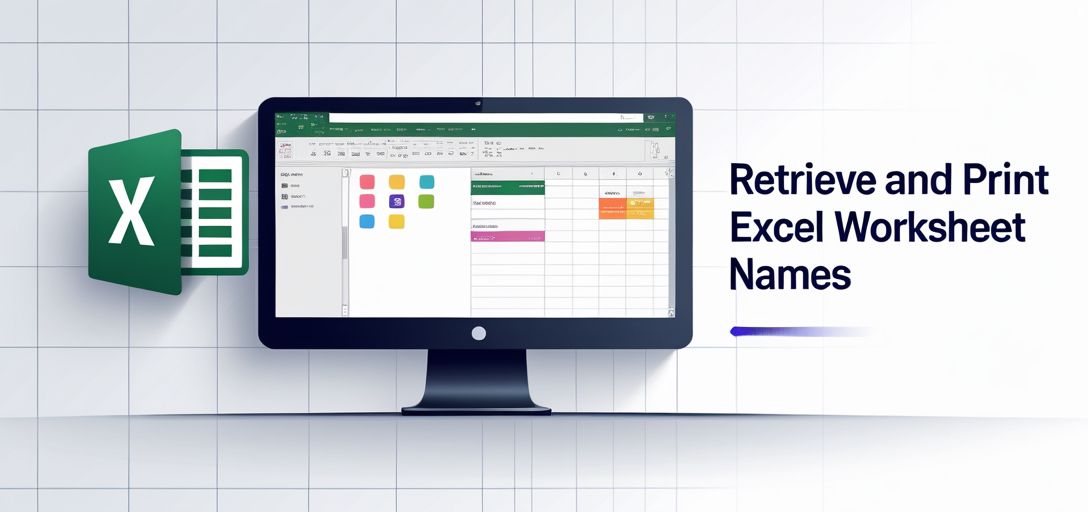How to Retrieve and Print Excel Worksheet Names Using GroupDocs.Viewer for .NET: A Comprehensive Guide
Introduction
Managing spreadsheet data can be challenging, especially when you need to list all worksheet names within an Excel file using C#. This guide provides a solution by leveraging GroupDocs.Viewer for .NET. With this powerful library, retrieving and printing worksheet names becomes straightforward, simplifying your data management tasks.

In this tutorial, we’ll demonstrate how to implement this functionality in GroupDocs.Viewer for .NET. You’ll learn about setting up the library, initializing your environment, and writing code that efficiently lists worksheet names. By the end of this guide, you will:
- Understand how to use GroupDocs.Viewer for .NET with spreadsheets.
- Learn to retrieve and print worksheet names using C#.
- Gain insights into configuring GroupDocs.Viewer options for optimal performance.
Before diving into implementation details, ensure you have the following prerequisites in place.
Prerequisites
Required Libraries
- GroupDocs.Viewer for .NET: Ensure you have version 25.3.0 or later of this library installed.
- .NET Framework or Core: Your environment should support at least .NET Standard 2.0.
Environment Setup Requirements
- A compatible development environment (e.g., Visual Studio).
- An Excel file to process.
Knowledge Prerequisites
- Basic understanding of C# and object-oriented programming concepts.
- Familiarity with using NuGet packages in .NET projects.
With these prerequisites met, let’s set up GroupDocs.Viewer for .NET.
Setting Up GroupDocs.Viewer for .NET
To start working with GroupDocs.Viewer for .NET, you need to install the library. Here’s how you can do it using different package managers:
NuGet Package Manager Console
Run this command in your console:
Install-Package GroupDocs.Viewer -Version 25.3.0
.NET CLI
Use the following command:
dotnet add package GroupDocs.Viewer --version 25.3.0
License Acquisition Steps
GroupDocs offers different licensing options:
- Free Trial: Evaluate features with a temporary license.
- Temporary License: Obtain an extended evaluation period without limitations.
- Purchase: For long-term use, purchase a license.
To initialize and set up your environment, follow these steps in C#:
using System;
using GroupDocs.Viewer;
namespace SpreadsheetViewerExample
{
public class SetupGroupDocs
{
public static void Initialize()
{
// Set the license if available
License license = new License();
license.SetLicense("Path to your license file");
Console.WriteLine("GroupDocs Viewer initialized successfully.");
}
}
}
Implementation Guide
We’ll break down the process of retrieving and printing worksheet names into manageable steps.
Feature: Retrieve and Print Worksheet Names
This feature focuses on extracting and displaying all worksheet names from an Excel document using GroupDocs.Viewer for .NET. Follow these implementation steps:
Step 1: Initialize Viewer with a File Path
Begin by initializing the Viewer object with your spreadsheet file path.
string filePath = "YOUR_DOCUMENT_DIRECTORY/sample.xlsx";
using (Viewer viewer = new Viewer(filePath))
{
// Proceed to the next step...
}
Step 2: Set Up ViewInfoOptions for HTML View
Configure ViewInfoOptions to set up the HTML view of your spreadsheet. This configuration is essential for rendering the document correctly.
ViewInfoOptions viewInfoOptions = ViewInfoOptions.ForHtmlView();
viewInfoOptions.SpreadsheetOptions = SpreadsheetOptions.ForOnePagePerSheet(); // Each sheet as one page.
Step 3: Retrieve View Information
Obtain the ViewInfo object, which contains details about the document’s structure and pages.
ViewInfo viewInfo = viewer.GetViewInfo(viewInfoOptions);
Console.WriteLine("Worksheets:");
Step 4: Iterate Over Each Page and Print Worksheet Names
Finally, iterate over each page to extract and print worksheet names.
foreach (Page page in viewInfo.Pages)
{
Console.WriteLine($" - Worksheet {page.Number} name '{page.Name}'");
}
Troubleshooting Tips
- File Path Issues: Ensure the file path is correct and accessible.
- Library Version Compatibility: Verify your GroupDocs.Viewer version matches this guide’s requirements.
Practical Applications
This feature can be applied in various scenarios, such as:
- Automated Reporting: Listing worksheets for reports from large datasets.
- Data Management Tools: Integrating into applications where users manage spreadsheet data.
- Business Intelligence Solutions: Enhancing BI tools by providing quick access to worksheet names in analytics dashboards.
Performance Considerations
To optimize your application using GroupDocs.Viewer:
- Manage Resources Wisely: Dispose of
Viewerobjects properly to free memory. - Optimize Document Size: Work with smaller documents or split large files into manageable sheets.
- Follow Best Practices: Use efficient data structures and algorithms for document processing tasks.
Conclusion
In this tutorial, we explored how to retrieve and print worksheet names from an Excel file using GroupDocs.Viewer for .NET. By following the steps outlined above, you can integrate this functionality into your applications efficiently. Next, consider exploring other features of GroupDocs.Viewer or integrating it with additional systems in your .NET projects.
FAQ Section
- What is GroupDocs.Viewer for .NET used for?
- It’s a powerful library that enables developers to view, convert, and manipulate documents in various formats within .NET applications.
- Can I use GroupDocs.Viewer with other programming languages?
- Yes, GroupDocs offers SDKs for multiple languages including Java, PHP, Node.js, Python, and more.
- How do I handle large Excel files efficiently?
- Consider splitting large files or using efficient data structures to manage memory usage effectively.
- What are the main benefits of using GroupDocs.Viewer for .NET?
- It simplifies document viewing tasks, supports a wide range of formats, and integrates seamlessly with existing .NET applications.
- Where can I find more resources on GroupDocs.Viewer for .NET?
- Visit the GroupDocs Documentation for comprehensive guides and API references.
Resources
- Documentation: Explore detailed guides at GroupDocs Documentation.
- API Reference: Access API details on GroupDocs API Reference.
- Download GroupDocs.Viewer for .NET: Get the latest version from GroupDocs Releases.
- Purchase: Buy a license at GroupDocs Purchase Page.
- Free Trial & Temporary License: Test or extend your evaluation with options available on their trial page and temporary license.
- Support: Need help? Join the discussion at GroupDocs Support Forum.